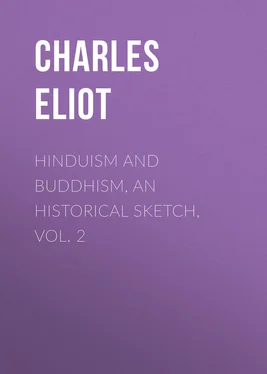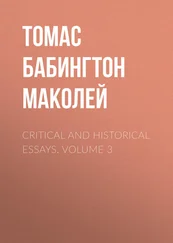Charles Eliot - Hinduism and Buddhism, An Historical Sketch, Vol. 2
Здесь есть возможность читать онлайн «Charles Eliot - Hinduism and Buddhism, An Historical Sketch, Vol. 2» — ознакомительный отрывок электронной книги совершенно бесплатно, а после прочтения отрывка купить полную версию. В некоторых случаях можно слушать аудио, скачать через торрент в формате fb2 и присутствует краткое содержание. Жанр: foreign_religion, Философия, Религиозная литература, foreign_psychology, foreign_antique, foreign_prose, на английском языке. Описание произведения, (предисловие) а так же отзывы посетителей доступны на портале библиотеки ЛибКат.
- Название:Hinduism and Buddhism, An Historical Sketch, Vol. 2
- Автор:
- Жанр:
- Год:неизвестен
- ISBN:нет данных
- Рейтинг книги:4 / 5. Голосов: 1
-
Избранное:Добавить в избранное
- Отзывы:
-
Ваша оценка:
- 80
- 1
- 2
- 3
- 4
- 5
Hinduism and Buddhism, An Historical Sketch, Vol. 2: краткое содержание, описание и аннотация
Предлагаем к чтению аннотацию, описание, краткое содержание или предисловие (зависит от того, что написал сам автор книги «Hinduism and Buddhism, An Historical Sketch, Vol. 2»). Если вы не нашли необходимую информацию о книге — напишите в комментариях, мы постараемся отыскать её.
Hinduism and Buddhism, An Historical Sketch, Vol. 2 — читать онлайн ознакомительный отрывок
Ниже представлен текст книги, разбитый по страницам. Система сохранения места последней прочитанной страницы, позволяет с удобством читать онлайн бесплатно книгу «Hinduism and Buddhism, An Historical Sketch, Vol. 2», без необходимости каждый раз заново искать на чём Вы остановились. Поставьте закладку, и сможете в любой момент перейти на страницу, на которой закончили чтение.
Интервал:
Закладка:
But if the above is the gist of the traditions, the position described is not clear. The council is recognized by Mahayanists yet it appears to have resulted in the composition of a Sarvâstivâdin treatise, and the tradition connecting the Sarvâstivâdins with the council is not likely to be wrong, for they are recognized in the inscription on Kanishka's casket, and Gandhara and Kashmir were their headquarters. The decisions of councils are often politic rather than logical and it may be that the doctors summoned by Kanishka, while compiling Sarvâstivâdin treatises, admitted the principle that there is more than one vehicle which can take mankind to salvation. Perhaps some compromise based on geography was arranged, such as that Kashmir should be left to the Sarvâstivâdin school which had long flourished there, but that no opposition should be offered to the Mahayanists elsewhere.
The relations of the Sarvâstivâdins to Mahayanism are exceedingly difficult to define and there are hardly sufficient materials for a connected account of this once important sect, but I will state some facts about it which seem certain.
It is ancient, for the Kathâvatthu alludes to its doctrines. 200 200 See above, vol. I. p. 262. For an account of the doctrines see also Vasilief, 245 ff. Rockhill, Life of the Buddha , pp. 190 ff.
It flourished in Gandhara, Kashmir and Central Asia, and Kanishka's casket shows that he patronized it. 201 201 Its connection with Gandhara and Kashmir is plainly indicated in its own scriptures. See Przyluski's article on "Le Nord-Ouest de l'Inde dans le Vinaya des Mûla-sarvâstivâdins," J.A. 1914, II. pp. 493 ft. This Vinaya must have received considerable additions as time went on and in its present form is posterior to Kanishka.
But it appears to have been hardly known in Ceylon or Southern India. It was the principal northern form of Hinayanism, just as the Theravâda was the southern form. I-Ching however says that it prevailed in the Malay Archipelago.
Its doctrines, so far as known, were Hinayanist but it was distinguished from cognate schools by holding that the external world can be said to exist and is not merely a continual process of becoming. It had its own version of the Abhidharma and of the Vinaya. In the time of Fa-Hsien the latter was still preserved orally and was not written. The adherents of this school were also called Vaibhâshikas, and Vibhâshâ was a name given to their exegetical literature.
But the association of the Sarvâstivâdins with Mahayanists is clear from the council of Kanishka onwards. Many eminent Buddhists began by being Sarvâstivâdins and became Mahayanists, their earlier belief being regarded as preliminary rather than erroneous. Hsüan Chuang translated the Sarvâstivâdin scriptures in his old age and I-Ching belonged to the Mûlasarvâstivâdin school; 202 202 The distinction between Sarvâstivâdin and Mûlasarvâstivâdin is not clear to me. I can only suggest that when a section of the school accepted the Mahâvibhâshâ and were known as Vaibhâshikas others who approved of the school chiefly on account of its excellent Vinaya called themselves Primitive Sarvâstivâdins.
yet both authors write as if they were devout Mahayanists. The Tibetan Church is generally regarded as an extreme form of Mahayanism but its Vinaya is that of the Sarvâstivâdins.
Though the Sarvâstivâdins can hardly have accepted idealist metaphysics, yet the evidence of art and their own version of the Vinaya make it probable that they tolerated a moderate amount of mythology, and the Mahayanists, who like all philosophers were obliged to admit the provisional validity of the external world, may also have admitted their analysis of the same as provisionally valid. The strength of the Hinayanist schools lay in the Vinaya. The Mahayanists showed a tendency to replace it by legends and vague if noble aspirations. But a code of discipline was necessary for large monasteries and the code of the Sarvâstivâdins enjoyed general esteem in Central Asia and China.
Three stages in the history of Indian Buddhism are marked by the names of Aśvaghosha, Nâgârjuna and the two brothers Asanga and Vasubandhu. It would be easier to give a precise description of its development if we were sure which of the works ascribed to these worthies are authentic, but it seems that Aśvaghosha represents an ornate and transitional phase of the older schools leading to Mahayanism, whereas Nâgârjuna is connected with the Prajñâ-pâramitâ and the nihilistic philosophy described in the preceding chapter. Asanga was the founder of the later and more scholastic system called Yogâcâra and is also associated with a series of revelations said to have been made by Maitreya.
As mentioned above, tradition makes Aśvaghosha, 203 203 See Sylvain Lévi, J.A. 1908, XII. 57 ff., and Winternitz, Ges. Ind. Lit. II. i. pp. 201 ff.
one of the most brilliant among Sanskrit writers, live at the court of Kanishka 204 204 The only reason for doubting it is that two stories (Nos. 14 and 31) in the Sûtrâlankâra (which appears to be a genuine work) refer to Kanishka as if he had reigned in the past. This may be a poetic artifice or it may be that the stories are interpolations. See for the traditions Watters on Yüan Chwang , II. 102-4 and Takakusu in J.R.A.S. 1905, p. 53 who quotes the Chinese Samyukta-ratna-piṭaka-sûtra and the Record of Indian Patriarchs. The Chinese list of Patriarchs is compatible with the view that Aśvaghosha was alive about 125 A.D. for he was the twelfth Patriarch and Bodhidharma the twenty-eighth visited China in 520. This gives about 400 years for sixteen Patriarchs, which is possible, for these worthies were long-lived. But the list has little authority.
and according to some accounts he was given to the Kushans as part of a war indemnity. The tradition 205 205 The traditions are conveniently collected in the introduction to Teitaro Suzuki's translation of The Awakening of Faith.
is confirmed by the style and contents of his poems and it has been noted by Foucher that his treatment of legends is in remarkable accord with their artistic presentment in the Gandharan sculptures. Also fragmentary manuscripts of his dramas discovered in Central Asia appear to date from the Kushan epoch. Aśvaghosha's rank as a poet depends chiefly on his Buddhacarita, or life of the Buddha up to the time of his enlightenment. It is the earliest example of a Kâvya, usually translated as artificial epic, but here literary skill is subservient to the theme and does not, as too often in later works, overwhelm it. The Buddha is its hero, as Râma of the Râmâyana, and it sings the events of his earlier life in a fine flow of elaborate but impassioned language. Another of his poems, 206 206 The Saundarânandakâvya.
discovered only a few years ago, treats of the conversion of Nanda, the Buddha's half-brother.
Various other works are ascribed to Aśvaghosha and for the history of Buddhism it is of great interest to decide whether he was really the author of The Awakening of Faith . This skilful exposition of a difficult theme is worthy of the writer of the Buddhacarita but other reasons make his authorship doubtful, for the theology of the work may be described as the full-blown flower of Mahayanism untainted by Tantrism. It includes the doctrines of Bhûta-tathatâ, Âlaya-vijñâna, Tathâgatagarbha and the three bodies of Buddha. It would be dangerous to say that these ideas did not exist in the time of Kanishka, but what is known of the development of doctrine leads us to expect their full expression not then but a century or two later and other circumstances raise suspicions as to Aśvaghosha's authorship. His undoubted works were translated into Chinese about 400 A.D. but The Awakening of Faith a century and a half later. 207 207 See Nanjio, Nos. 1182, 1351, 1250, 1299. It is noticeable that the translator Paramârtha shows a special interest in the life and works of Asanga and Vasubandhu.
Yet if this concise and authoritative compendium had existed in 400, it is strange that the earlier translators neglected it. It is also stated that an old Chinese catalogue of the Tripitaka does not name Aśvaghosha as the author. 208 208 See Winternitz, Ges. Ind. Lit. II. i. p. 211. It is also noticeable that The Awakening of Faith appears to quote the Lankâvatâra sûtra which is not generally regarded as an early Mahayanist work.
Интервал:
Закладка:
Похожие книги на «Hinduism and Buddhism, An Historical Sketch, Vol. 2»
Представляем Вашему вниманию похожие книги на «Hinduism and Buddhism, An Historical Sketch, Vol. 2» списком для выбора. Мы отобрали схожую по названию и смыслу литературу в надежде предоставить читателям больше вариантов отыскать новые, интересные, ещё непрочитанные произведения.
Обсуждение, отзывы о книге «Hinduism and Buddhism, An Historical Sketch, Vol. 2» и просто собственные мнения читателей. Оставьте ваши комментарии, напишите, что Вы думаете о произведении, его смысле или главных героях. Укажите что конкретно понравилось, а что нет, и почему Вы так считаете.












